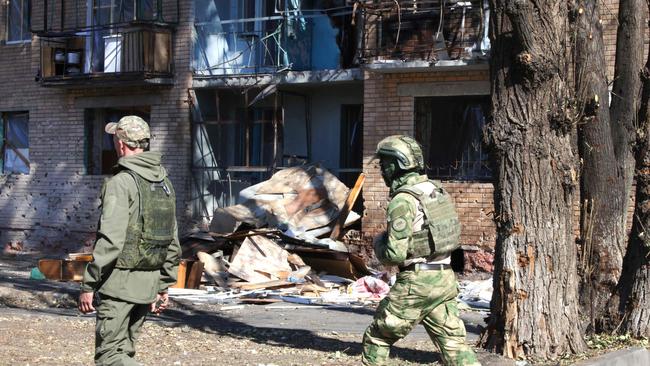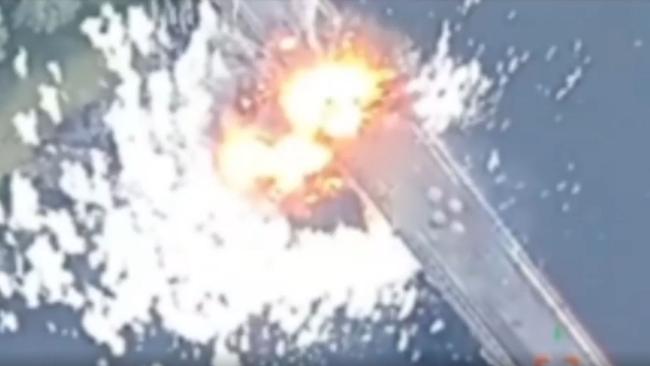Kursk incursion proves Putin’s red lines are a bluff, says Zelensky
Ukraine’s President says its invasion into Russian territory is proof threats of a nuclear apocalypse were never a reality.

Ukraine’s audacious invasion of Russian territory proves that Kremlin threats of retaliation are nothing but a bluff, President Zelensky declared, urging allies to ignore President Putin’s so-called “red lines” and loosen restrictions on Ukraine’s use of western-supplied weapons.
Restrictions were placed on the use of western weapons against Russian territory from the beginning of the 2022 invasion due to fears that their use would trigger a wider conflict between Nato and Russia.
Those restrictions have been slipping over time but Kyiv has yet to secure permission to use the longest-range missiles against Russia, including the British-supplied Storm Shadow missiles, whose proposed use has provoked a diplomatic spat between Washington and London.
On August 6, Ukraine launched its ground invasion into Russia’s Kursk region without notifying allies in advance and taking with it western armour including British Challenger 2 tanks and American Bradley fighting vehicles.
The incursion has been met with limited resistance from a furious Russia but not the same prior threats of nuclear apocalypse from Putin.

Speaking to Ukrainian diplomats in Kyiv, Zelensky said the operation showed those red lines were an “illusory concept”, demonstrating to allies there was little to fear from untying Ukraine’s hands over the use of western weapons.
“We are witnessing a significant ideological shift,” he said. “The naive, illusory concept of so-called red lines regarding Russia, which dominated the assessment of the war by some partners, has crumbled apart these days.”
He urged allies to show the same courage as the Ukrainian soldiers who have led the operation. “The world sees that everything in this war depends only on courage - our courage, the courage of our partners,” he said. “On brave decisions for Ukraine, on courage in supporting Ukraine.”
In his nightly address on Sunday, Zelensky said the operation in Kursk, in which Ukraine has taken control of nearly 500 square miles of Russian territory, was aimed at creating a “buffer zone” to protect against strikes on Ukrainian cities, indicating that Ukraine intended to dig in at least for the medium term.
But the incursion may have had multiple goals and has already had multiple effects, including reviving national morale, upending the narrative of a losing war of attrition and reviving the debate on the restrictions applied to the use of western weapons, which Ukrainian commanders compare to fighting with one hand tied behind the back.
The seizure of Russian territory may also give the Ukrainians a better hand in any negotiations, though Moscow, previously keen on a settlement, has ruled out talks after the Kursk operation.
Zelensky’s words apply as much to the Ukrainian effort in the Donbas in eastern Ukraine, where Russian forces are advancing amid heavy fighting over the city of Pokrovsk. Ukrainian commanders say that to defend the area requires the ability to hit air bases within Russian territory from which planes carrying “glide bombs” are dispatched. On Monday Ukrainian authorities issued a final civilian evacuation order for Pokrovsk, which its forces are expected to abandon in the coming days.
Only in Kursk has Ukraine seen progress in recent days. On Monday it was confirmed that Ukrainian forces had destroyed a third and final bridge over the Seym River, cutting off the southern part of Kursk, where remaining Russian troops now face encirclement by Kyiv’s forces.
The destruction of the bridges complicates efforts to resupply or evacuate Russian troops now trapped between the river, the Ukrainian border and the newly taken area. Russian officials downplayed the significance, saying they had thrown pontoon bridges across the river to continue resupply and defence, but Russian troops still there also faced the prospect of capture by Ukraine.
On Monday, Zelensky indicated another key purpose for the incursion: capturing Russian prisoners of war to use as leverage for the return of 8,000 Ukrainian soldiers held by Russia. “We are achieving our goals. This morning we have another replenishment of the exchange fund for our country,” he said.
THE TIMES



To join the conversation, please log in. Don't have an account? Register
Join the conversation, you are commenting as Logout